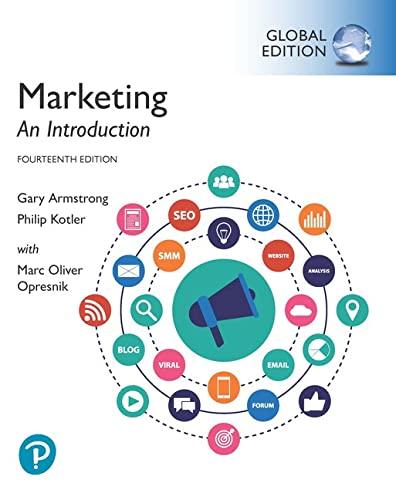Long-term brands face a balancing act. On the one hand, they must remain true to the characteristics
Question:
Long-term brands face a balancing act. On the one hand, they must remain true to the characteristics that endear them to their throngs of loyal customers. On the other hand, the longer a brand remains, the more it must develop new attributes that appeal to new generations of customers. Maintaining this balance between consistency and relevancy is difficult. Brands that can do this for decades are truly special. Take BMW’s MINI—
the modern representation of the iconic British people’s car.
MINIs continue to roll off the assembly line after almost 60 years. Not only has MINI remained true to the original brand while keeping up with changing customer dynamics, it has done so despite having been owned by six different companies.
In 1956, the Suez Crisis brought on a major worldwide fuel shortage. As a result, the demand for small, fuel-efficient vehicles spiked. The British Motor Corporation (BMC) gave Sir Alec Issigonis the job of designing a vehicle with a unique challenge—minimize dimensions and amenities while maximizing efficiency and utility. That challenge became the heart and soul of the MINI brand.
Measuring only 10 feet long, four and a half feet wide, and four and a half feet high, the original MINI rode on tiny 10-inch wheels. But with its wheels pushed out to the extreme corners and its 40-horsepower engine mounted sideways, the tiny car could seat four people comfortably with room in the back for cargo. It was fuel efficient and boasted a sturdy frame and suspension. The innovative design of the original MINI gave it nimble reflexes and go kart–like handing. Available in a variety of basic colors, the car offered optional niceties such as adjustable seats, opening rear side windows, rubber mats, and a heater.
Customers were thrilled with the MINI and its small-onsize-big-on-function design. Those initial characteristics of the brand were soon enhanced even further through a partnership between BMC and John Cooper, the legendary Formula One driver and race car designer. Recognizing the MINI’s potential as a race car based on its small size, low weight, and stiff chassis, Cooper designed performance modifications for the drivetrain, suspension, and brakes. Cooper’s hunches were right. MINI won the Monte Carlo Rally three times between 1958 and 1962 against veteran racing brands such as Ferrari, Maserati, and Lotus. With Cooper performance modifications added to the options list, the MINI was poised to deliver more value than ever...........................
Questions 1. Discuss how MINI has endured for 60 years as a brand despite being owned by various companies.
2. Does MINI have high brand equity? Explain.
3. Over the years, has MINI been positioned based on attributes, benefits, or values? Explain.
4. Do you think BMW is taking MINI in the right direction with its current branding strategy? Why or why not?
Step by Step Answer:

Marketing An Introduction
ISBN: 9781292294865
14th Global Edition
Authors: Gary Armstrong, Philip Kotler, Marc Oliver Opresnik





